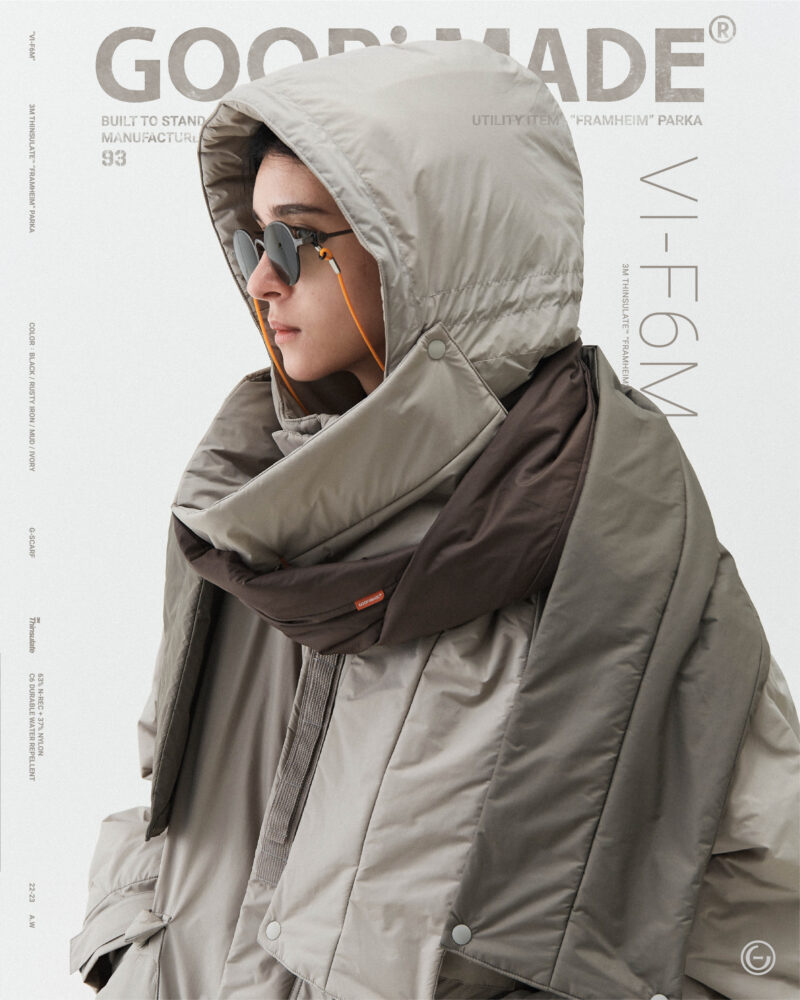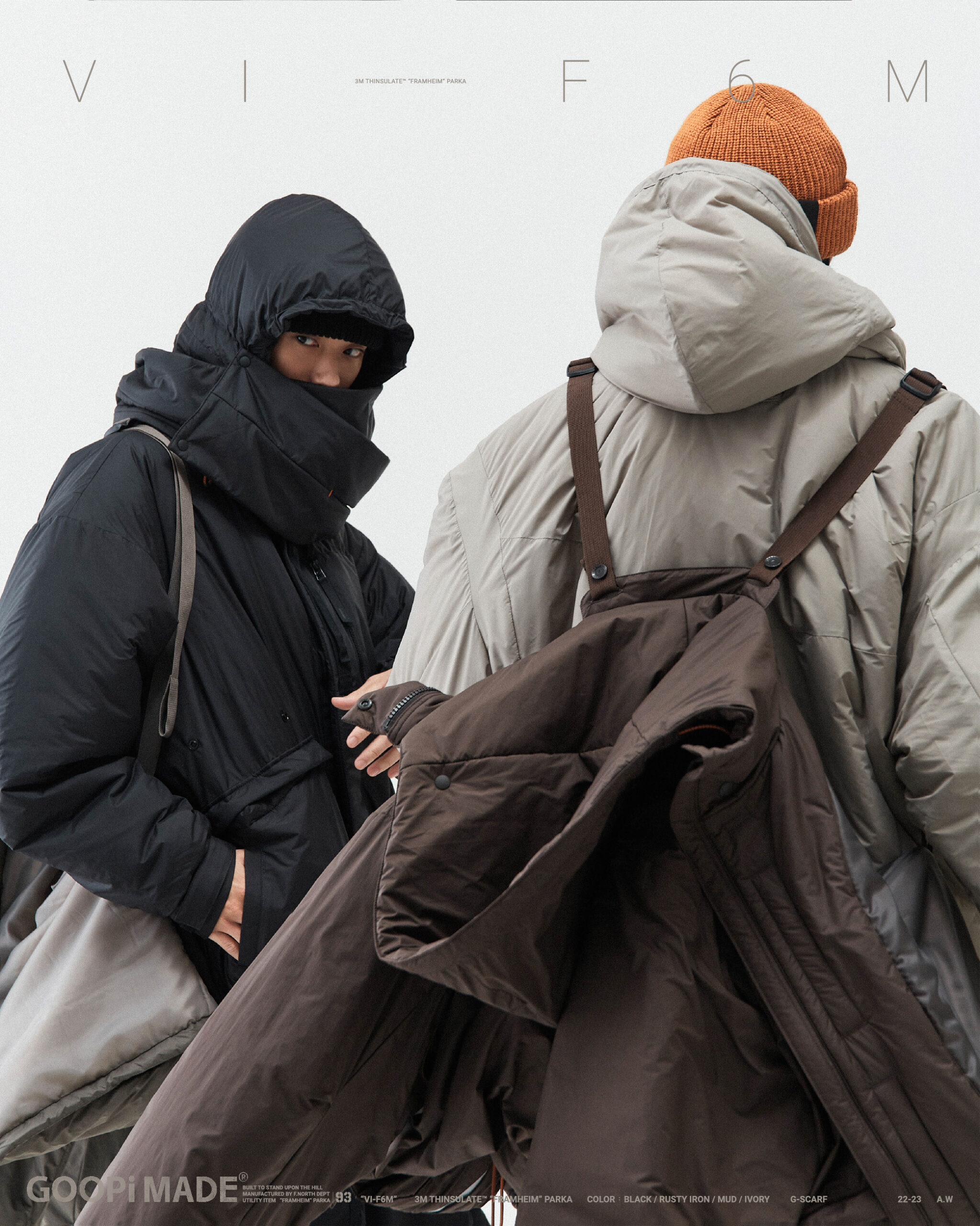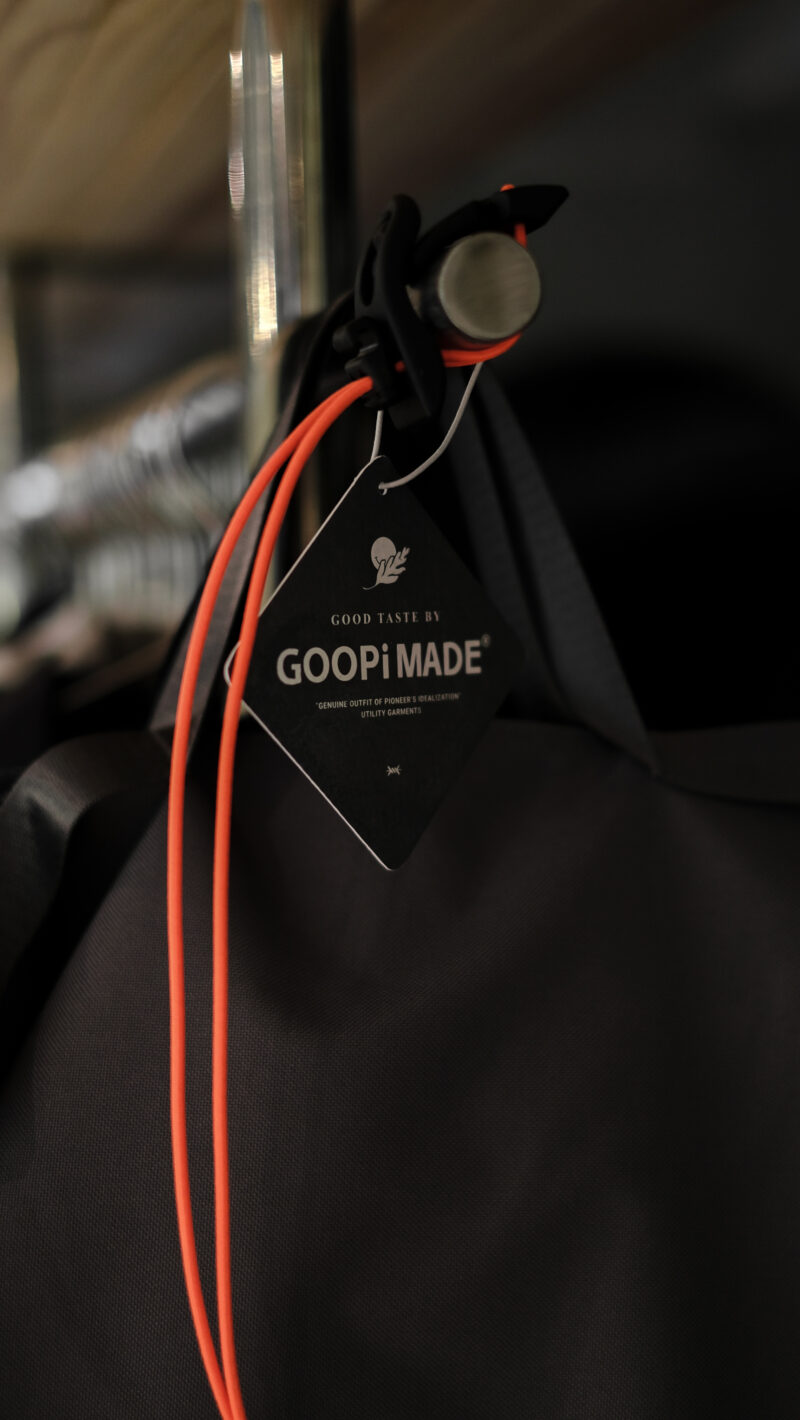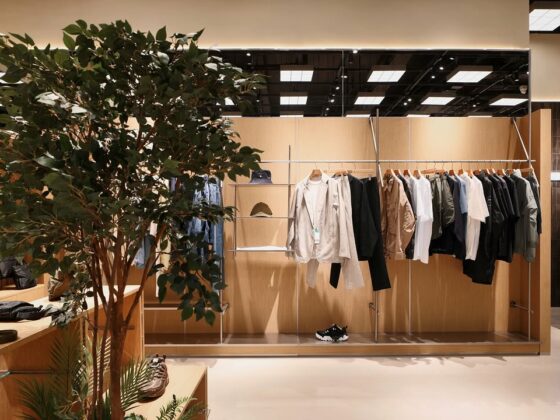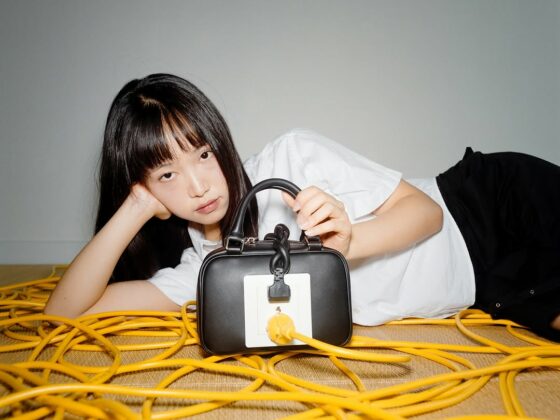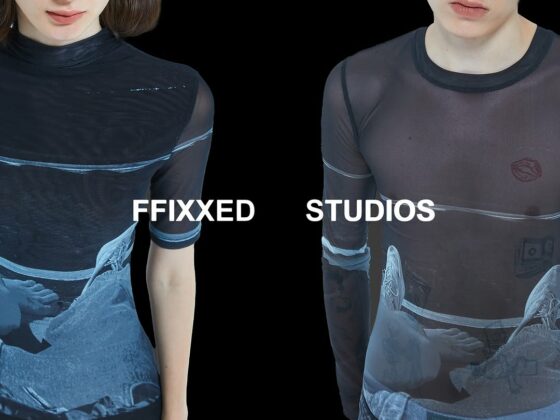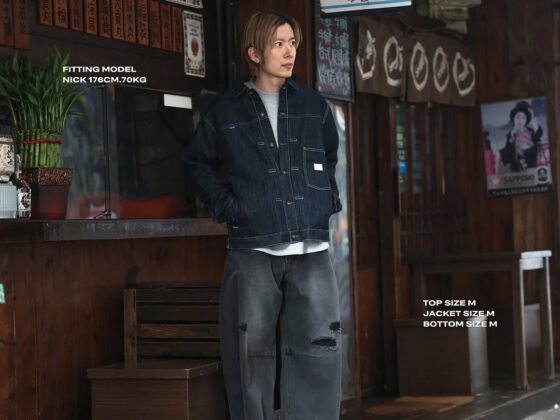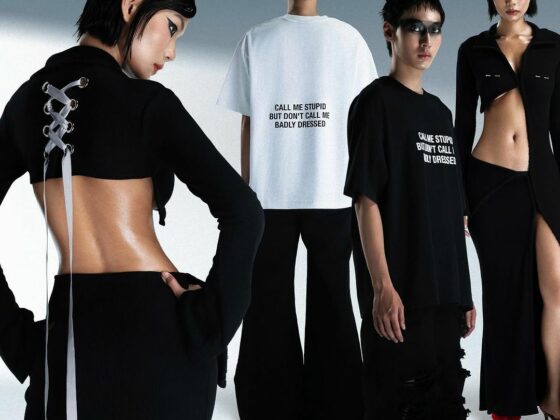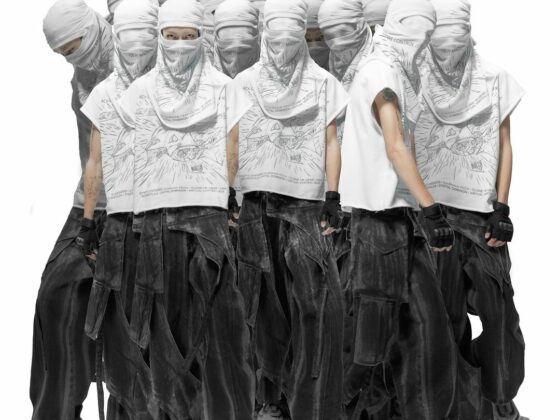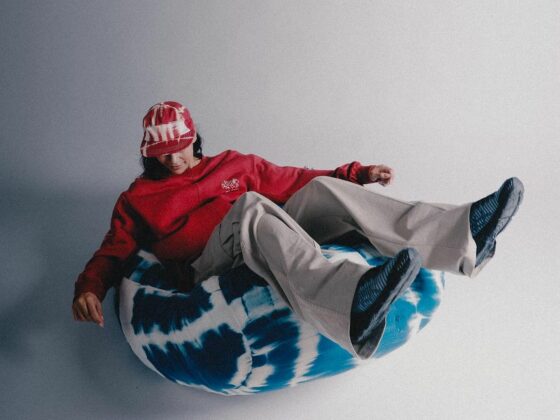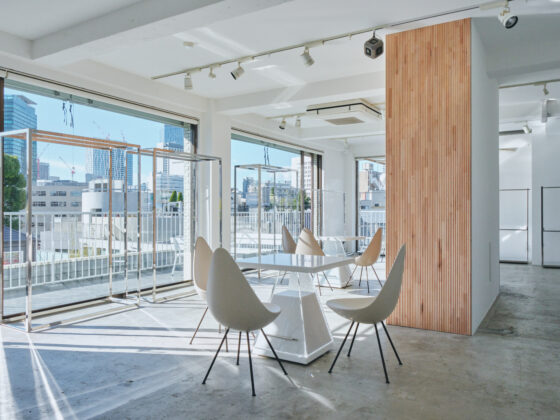Nana: Fashion has infinite possibilities, and new power is born from it. As a carrier of culture and times, fashion encompasses everything. From trendy to traditional culture, from celebrities, idols to everyone’s daily life, and from West to East, it is our discourse, our power, our time. Through Asian Voice, we hope to spread the local Asian fashion culture to the world by moving cross languages and borders.
In this issue of ASIAN VOICE, we welcom GOOPi made from Taiwan. Established in 2016, GOOPi is a fashion retailer based in Taiwan that strives to provide high-quality clothing options. The store specializes in carrying unique, small-batch designer brands that prioritize both style and functionality, ensuring that each item is carefully curated for its distinctiveness and quality.
Beyond curating other designers’ works, GOOPi also produces and sells its own independent label, GOOPiMADE, which is known for its commitment to high-quality fabrics, practical functionality, and distinctive designs. GOOPi is dedicated to bringing consumers international brands with exceptional quality and designs, all while proudly representing Taiwan and its fashion culture to the world.
We are honored to have Mr. Smirk, one of GOOPi’s founders, share with us the unique aesthetic and style behind the brand. With a dedication to fashion culture, GOOPi is committed to providing a strong foundation for Asian and global fashion communities.
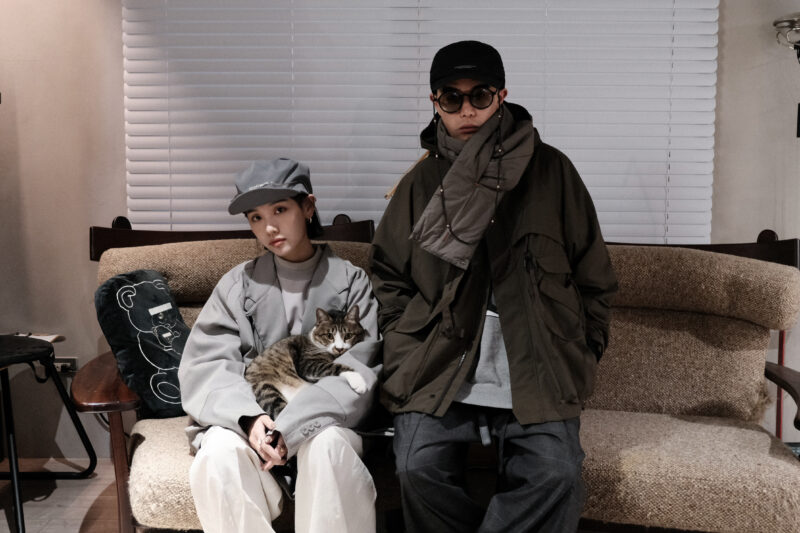
Nana: Firstly, could you please briefly introduce yourself to our readers and share some background on creating GOOPi MADE?
Smirk: My name is Smirk, and GOOPi was founded in 2016 by Leo and me. Initially, we weren’t a very formal brand. We simply wanted to help promote our designer friends’ work that we thought were exceptional but weren’t getting noticed. We felt it was a shame and decided to do our best to promote and sell their work. After accumulating experience over time, we began to develop the GOOPi brand.Nana: What was the initial style and direction of GOOPi, and has it changed over time?
Smirk: When GOOPi was founded, I had just finished my military service. During my time in the military, I was responsible for managing all military uniforms and equipment, as well as distributing the standard equipment to each person. While I wasn’t necessarily an expert, I had a lot of exposure and absorption to the environment at that time, which influenced my preference for studying vintage clothing. At the very beginning, we combined military uniforms, a functional style, and vintage elements. I felt that the combination of military uniforms and vintage was a classic design for us. We wanted to add more functionality to this style, so that every new product we launched would have compound functionality. For example, for summer products, we would incorporate moisture-wicking and quick-drying features, or consider the application of auxiliary materials based on usage scenarios. Nowadays, our focus is still on multiple functionality.
Nana: You mentioned earlier that the brand was initially interested in vintage. ASIAN VOICE has had the opportunity to interact with many Taiwanese brands, and urban outdoor and vintage are very popular trends in Taiwan. How do you view this trend?
Smirk: For us, this is a great trend because design always exists based on classics. So, this is something we have always been very happy to see. However, in terms of vintage clothing, we are definitely not the most professional. In Taiwan, we have many seniors and friends who are very professional in this area, and GOOPi ‘s current direction actually has very little overlap with vintage. It’s just that we love classic designs, so some concepts may be related to vintage, such as how to use vintage clothing to make one’s outfit look more diverse. We will extend and develop from this direction, but it is not the main axis of GOOPi . In terms of the Taiwanese market, there are many other brands and select shops that do very well in vintage.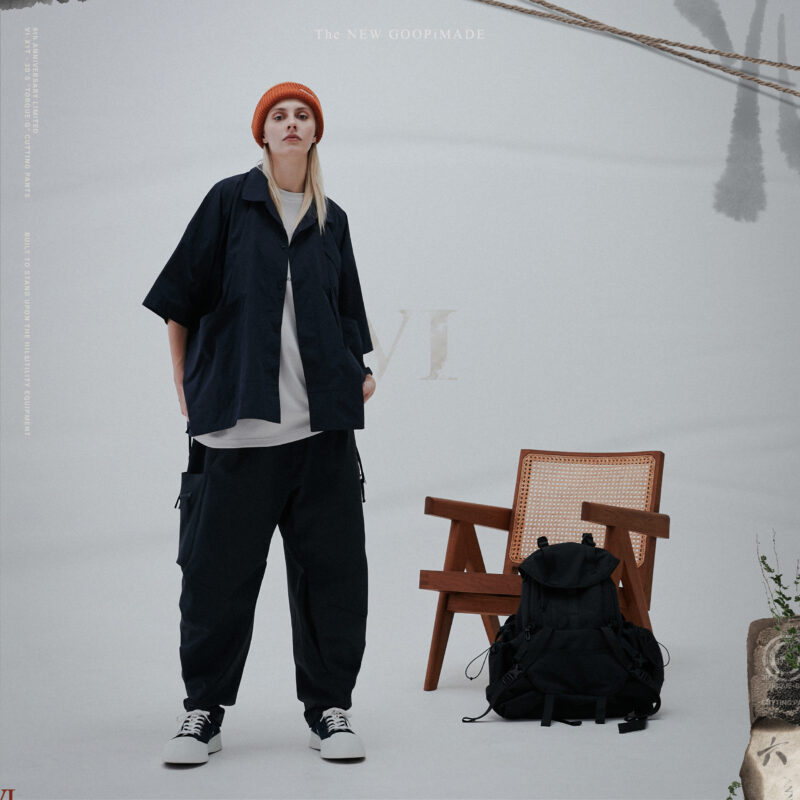
Nana: In Japan and Taiwan, culture receives a lot of attention. In your opinion, what are the differences between Taiwanese brands and culture compared to other countries, especially Japanese brands?
Smirk: From my personal growth experience and perspective, there is a characteristic of Japanese culture that I greatly admire, and that is the spirit of craftsmanship. They pursue perfection in every detail, even to the point where it might be as delicate as a little secret that only the wearer can feel. This kind of attention to detail can only be achieved by people who truly love a brand or culture, and this dedication and obsession is a concept that we really appreciate. In contrast, the fashion in Taiwan that I have experienced is perhaps more diverse and varied. In Taiwan, you can see many young people who love different cultures and styles of fashion, and for some Taiwanese people as a whole, they are very willing to innovate and accept new things. I have always felt that Taiwan is very accepting of different cultures, so perhaps it is easier to see different expressions of fashion in Taiwan. This is just my personal opinion, and there is no right or wrong style. But I have always believed that trying to wear something different from others in clothing is a great thing, because it shows that you are further understanding yourself.
Nana: Absorbing different and diverse cultures, and possibly turning them into something with a local flavor, is a very interesting process. Taiwanese friends seem to enjoy the process of innovation even more.
Smirk: But I must say that regardless of fashion or culture, I think every region has similarities. The process of innovation is actually a form of self-realization, which may include everyone’s growth experience, imagination of the future, and so on. It requires great focus, but most importantly, it needs to gain one’s own recognition.Nana: I wonder if I can consider the spirit of craftsmanship, which means attention to detail and diverse fashion and styles, as a core concept of Goopimade?
Smirk: Yes, this is a very central concept for us. We have been fortunate enough to persist for 7 years and continue to update and innovate. For example, we started with vintage and functional styles, then gradually incorporated elements of outdoor and other diverse styles. This is the most challenging part for me because we continue to grow and our preferences change. But we are committed to gradually connecting these changes, so that our original customers can accept our new ideas and we don’t suddenly appear in a completely different image. It is a process of learning and growing together with our customers.Nana: In Indonesia, although skateboarding culture is popular, hard rock and melodic hardcore are also popular in terms of music. What popular music genres there are in Taiwan?
Smirk: To be honest, I am definitely not a music expert. When you mentioned Indonesia, I think that might be more towards popular tastes. Speaking of GOOPi , since we have many different departments, each with its own core, they may play different styles of music. For example, in my office, I like to play funk music. I don’t consider myself someone who is very passionate or professional about music, but I do look for music styles that have some rhythm but are not too intense.
Nana: Apart from fashion, do you have any other personal interests or hobbies?
Smirk: I think I’m a very ordinary guy, with hobbies similar to most people. For example, I like collecting action figures and models. But I don’t limit myself to collecting a specific type of thing. Although the clothing we make is constantly innovating, I myself am someone who loves old-fashioned designs. I like to explore old things and have always been fascinated by classic designs. I can always learn a lot and get more information from past designs. In this regard, I especially like classic watches, antique cars, and so on.Nana: Classics and vintage seem to be quite attractive to you, whether it’s in terms of design or personal hobbies.
Smirk: Although from the outside, you may not feel that our design has anything to do with Vintage, it’s not just about paying homage to a classic thing in an obvious way. Instead, it’s about being inspired by the daily interactions with these classic cultures and extending them into new ideas.Nana: Goopi has also collaborated with popular brands in Taiwan and has been featured in many media outlets beyond fashion. Do you have any ideas for future collaborations or national development?
Smirk: I really hope to establish deeper connections with Japan. Currently, I can’t reveal anything yet, but many interesting projects are in progress. In addition to Japan, Hong Kong and the UK have always maintained close cooperation with us. We are working hard to extend our efforts and hope that people from all over the world can experience the feeling of wearing GOOPi .Nana: What are your thoughts on Asian street culture and fashion, and what are your expectations for future developments?”
My qualifications are not good enough to comment on such a big issue. But in my mind, Asian street culture used to be at a very high point, whether it was from Asian elements or the rise of Hong Kong. When I was young, I thought it was very influential. No one can control the future, and no one can know it. I hope that through our efforts and status, we can bring positive effects to more brands and make the culture in Asia more diverse and rich on many levels. You don’t necessarily have to buy Goopi now. What we hope for is that everyone has their own style, and there is an opportunity for mutual exchange between cultures throughout Asia. We don’t need to categorize brand styles. By that time, anyone with a Goopi item could match their own style. That is our goal. Just like our slogan: As a solitary person, wear whatever makes you happy. This slogan has not been used in any brand promotion, but our copy often mentions that as a solitary person, you should recognize yourself no matter what you wear.They pursue perfection in every detail, even to the point where it might be as delicate as a little secret that only the wearer can feel.



